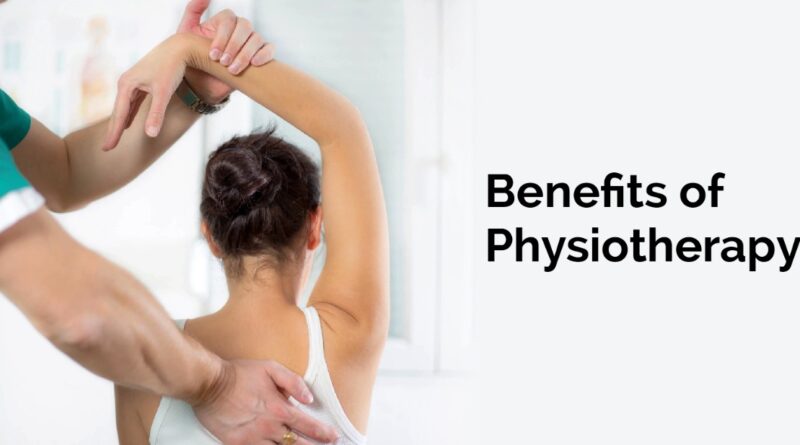PREVALENCE OF WORK RELATED MUSCULOSKELETAL DISORDER IN BEAUTY PARLOUR WORKERS BY USING NORDIC QUESTIONNAIRE

Dakshinayan Maruti Wadhawe1
Dr. Pawan Kumar2
Dr. Virendra Meshram3
1Intern at SVSS Latur College of Physiotherapy, Latur. 2Associate Professor, Department of Cardio Physiotherapy, SVSS Latur College of Physiotherapy, Latur. 3Principal, SVSS Latur College of Physiotherapy, Latur.
ABSTRACT
Background: Beauty parlour workers are a group of workers whose working ability and health condition may be affected by specific work related activities. They are also at a risk of developing work related musculoskeletal disorders (WRMDs) due to working condition and work related exposures. Prevalence of WRMDs is lacking in Indian population. Hence, present study aimed to find out prevalence of musculoskeletal problems among beauty parlour workers.
Aim: To study Percentage of the work related musculoskeletal disorders in parlour worker using Nordic questionnaire.
Objective: To study the prevalence of the work related musculoskeletal disorders in beauty parlour workers.
Methodology: There were 107 subjects taken age range between 20-40 years. As per inclusion criteria subject had more than 2 months of working experience and working for more than 5 hours a day. Subjects were given Nordic scale questionnaire and the area of pain was marked by them on the scale. The data was taken on the excel sheet and data analysis was done them results were calculated.
Results: The prevalence of discomfort is more common in the upper back region 66 (61.6%) followed by lower back 44 (41.1%) and neck 43 (40.1%).The least affected are ankle/feet and elbows.
Conclusion: According to the present study there was a high prevalence of musculoskeletal disorders among parlour workers in latur city, India. The most common affected body region was upper back followed by lower back and neck . The moderate affected region was shoulder, hips/thighs/buttocks, wrists/hands and knees. The least affected body region was elbows and ankles/feet.
Keywords: Beauty parlour workers, Nordic questionnaire, Work related musculoskeletal disorders, pain.
INTRODUCTION
The Work Related Musculoskeletal Disorders (WRMSDs) are health problems that involve injuries or disorders of muscles, tendons, nerves, joints, cartilage and spinal disc which are suspected to have been associated with exposures to risk factors at a workplace1. WRMSDs are groups of syndromes characterized by symptoms of soft tissue pain, stiffness, swelling, weakness, discomfort and loss of function that can be caused or aggravated by work related exposures2.1A high prevalence of WRMSDs has been recorded (75.6%) among workers who are exposed to manual work, working in restricted postures, static work and vibrations1. Musculoskeletal disorders place a substantial burden on millions of people affecting all age groups. It can have major impact on worker function, performance and productivity2. Beauty parlour is a group of workers whose working ability and health condition may be affected by specific work related activities3. Typical postural issues in beauty parlour include excessive shoulder flexion and shoulder abduction which is caused by working with elbow at or greater than shoulder height, trunk flexion (because chair may not be at proper height), forward neck flexion, awkward wrist postures using scissors or hand shears1,4. The job of parlour worker is characterized by standing for prolonged periods of time in awkward body postures, handling a variety of chemicals, and undergoing repetitive hand movements5. In beauty parlour work, women and men are also exposed to physical and mental stress, and to musculoskeletal injuries arising from repetitive trauma disorders, as they have to stand for long periods6.
A study conducted on the WRMSDs among beauty parlour has majorly focused on particular or specific body area without any due considerations to other parts of the body that may also suffer musculoskeletal pain1.
A survey on Brazilian beauty parlour done to verify the prevalence of WRMSDs in beauty parlour through symptoms stated that the prevalence of WRMSDs was 71%3. There was only one study done in Uttrakhand, India where only male salon were assessed for neck and upper extremity disorders along with hand grip strength4. Hence, there is a lacuna in literature and need arises to study the prevalence of work related musculoskeletal disorders in both male and female beauty parlour in India so as to find which body region is majorly affected. Altered physical fitness may be an expected occurrence in beauty parlour since the work of beauty parlour is physically demanding causing strain due to the long working hours or days3.
Physical fitness is defined as “the ability to carry out daily tasks with vigor and alertness, without undue fatigue and with ample energy to enjoy leisure-time pursuits and to meet unforeseen emergencies”7.
Hence, a research question was raised that beauty parlour may be at risk of reduced physical fitness due to long hours of standing and sitting postures involved during the occupation. A study was done in Thailand on office workers where physical fitness of participants were assessed in five domains including range of motion, neck endurance, strengthening of neck flexor muscle, grip strength and cardio-respiratory fitness. The authors concluded that the participants had low physical fitness level7.
According to onsite observations, most of the beauty parlour used their non-dominant hands to comb, hold hair with their fingers and wave/curly hair while cutting or blow-drying, perfuming, washing hair etc4. These working conditions may also have impact on their physical fitness levels with reduced endurance, strength and flexibility7.
Hence, physical fitness needs to be evaluated so as to understand the associated health risks involved in them. Hence, in the present study, the authors tried to find the prevalence of physical fitness by assessing the beauty parlour in terms of strength, flexibility and endurance.
- METHOD AND MATERIAL
2.1.Study design:- cross sectional observational study.
2.2 Study duration:- 6 months.
2.3 Study setup:- latur district.
2.4 Sampling method:- simple random sampling.
2.5 Total sample size – 107, It is calculated by using Epi-data software with total population of 150 female beauty palour workers(N) and 50%(P) hypothesized of outcome variable and absolute precision is 5% (Use: CI=95% at Z=1.96 critical value). Then single proportion formula is applied.
Materials: Pen, Pencil, Nordic questionnaire, Measuring tape, Weighing machine.
- RESULT
Table No -1:- Descriptive Statistics
| Particulars | Mean | Std. Deviation | Min | Max |
| Age (Years) | 24.81 | 2.92 | 20.00 | 32.00 |
| Height (Cm.) | 156.23 | 7.03 | 149 | 176 |
| Weight (Kg.) | 52.19 | 5.91 | 135 | 68 |
| BMI (Kg/m2) | 21.41 | 2.38 | 14.6 | 29.4 |
Table No. 2 : – Days, hours and work experience of parlour workers
| WORKING DAYS PER WEEK | ||
| Days | Frequency | Percent |
| 5 | 12 | 11.2 |
| 6 | 3 | 2.8 |
| 7 | 92 | 85.9 |
| Total | 107 | 100 |
| WORKING HOURS PER DAY | ||
| Hours | Frequency | Percent |
| 5 – 6 | 79 | 73.8 |
| 7 – 8 | 26 | 24.2 |
| >8 | 2 | 1.8 |
| Total | 107 | 100 |
| WORK EXPERIENCE | ||
| Frequency | Percent | |
| 2 – 6 months | 11 | 10.2 |
| 7 – 12 months | 26 | 24.2 |
| >1 years | 70 | 65.4 |
| 107 | 100 | |



Table No -3 :- Shows the prevalence of different areas affected.
| Affected areas | Frequency of beauty parlour workers | Percentage(%) |
| Neck | 43 | 40.1 |
| Shoulders | 32 | 29.9 |
| Wrists/hands | 25 | 23.3 |
| Upper back | 66 | 61.6 |
| Elbows | 8 | 7.4 |
| Lower back | 44 | 41.1 |
| Hips/thighs/buttocks | 22 | 20.5 |
| Knees | 15 | 14 |
| Feet/ankles | 00 | 00 |

DISCUSSION
Parlour workers are group of workers whose ability and health condition may be affected by specific work related activities. A observational study conducted in latur city on parlour workers concluded that work-related back pain is a major health problem among parlour workers. Compare to non-parlour workers, the parlour workers frequently reported major musculoskeletal pain10.
The present study attempted to find the prevalence of WRMDs in beauty parlour workers of a city in the state of Karnataka in south India. The overall prevalence WRMDs was found to be high (62.11%). Similar findings were noted with higher prevalence of WRMDs in a previous studies conducted with overall prevalence of (75.6%) in Nigeria1, Brazil (71%)3 and Durban (60%)11.
The current result shows that the occurrence of pain during last 7 days showed to have high prevalence of discomfort in the upper back region 66 (61.6%) followed by lower back 44 (41.1%). The least affected were ankle/feet 0 (0%), elbow 8 (7.4%), knees 15 (14%), wrists/hands 25 (23.3%), hips/thighs/buttocks 22 (20.5%), shoulder 32 (29.9%), neck 43 (40.1%). Similar trend was noted during last 6 months with the most commonly affected body region being upper back 66 (57.9%) followed by lower back 38 (35.5%). However, compared to the above mention data, during last 6 months to 1 years although the occurrence of WRMSDs reduced.
In the present study it was also noted that upper back was the most affected body region followed by lower back with ankle/feet and elbow the least affected body regions. In this study it was noted that musculoskeletal pain was more in upper back followed by the lower back and neck and moderate amount of pain in shoulder, hips/thighs/buttocks, wrists/hands, knees, elbow and no pain in ankles/feet. However, contradictory to the present study where ankles/feet was not affected, previous studies have reported ankles/feet pain.
This geographical difference in shoulder not being affected in the present study against the other studies where shoulder is most affected may be explained through body stature differences, in Asia and African or European population. Body stature may include height, weight etc which should be the work station or place12.
The most common factors that are responsible for musculoskeletal problems may include age of parlour workers, their working experience, and the long hours they spent working in standing position, repetitive work done, lack of breaks, biomechanical (uncomfortable posture at work), working pattern, awkward postures / positions and modern lifestyle. However, the available studies show that the physical loads during normal parlour working work exceed tolerance thresholds and that regular breaks are rarely respected. The probability of tissue damage increases with the frequency and duration of biomechanical exposure. A static and inflexible nature of working position for an extended time might also develops muscle stiffness. The distinguishing nature of current study is that it initiated the exploration of occupational related prevalence and associated factors leading to back pain. This study has shown that the risk factors significantly associated with the WRMSDs.
The possible explanation might be the fact that workers with relatively longer duration of employment are often victims of the effects of cumulative exposure to work related hazards. Another possible reason might be that workers with longer duration of employment might carelessness the possible protection mechanisms of potential health and safety risk factors at there workplace, relying on the length of employment adaptation as a means of protection from adverse effects.
The absence of training regarding to health and safety was also the other substantial factor for back pain. The proximal association between safety training and low back pain has rarely been studied. Workers health and safety awareness and training could however, paly a great role in hazard and risk prevention and control measures. Safety training is more likely to promote workplace cultures of safety. Training targeting healthy lifestyle might also result in behavioural changes of workers leading them to enjoy physical exercises, which could in turn lead to a reduced probability of back pain disorders.
The multivariate analysis regression also related that working position or posture considerably contributed to the risk of developing back pain. This finding was consistent with those of other studies. It could be explained that awkward postures, such as bending, twisting and static posture such as prolonged standing, might impose anxiety on specific body parts by employing pressure on locomotive body leading to physical changes and functional impairments. A static and flexible nature of working position for an extended time might also develop muscle stiffness. The distinguishing nature of the current study is that it initiated the exploration of occupational related prevalence and associated factors leading to back pain. The occupational or work associated factors contributing to the conditions were pretend the government and other stakeholders could benefit from it and also such type of the result significant for policy design and in implementations of occupational health and safety service13.
5.CONCLUSION
According to the present study there was a high prevalence of musculoskeletal disorders among parlour workers in latur city, India. The most common affected body region was upper back followed by lower back and neck. The moderate affected region was shoulder, hips/thighs/buttocks, wrists/hands and knees. The least affected body region was elbows and ankles/feet.
6. ACKNOWLEDGEMENT
I would like to thank principle Dr.Virendra Meshram SVSS Latur college of Physiotherapy for allowing me to conduct study. I’m highly grateful to My Guide Dr.Pawan Kumar for his guidance, encouragement and support.I would like to thanks other teachers who helped me during the study. I would like to express my gratitude towards my family for the encouragement which helped me in completion of research.
My thanks and appreciation also goes to my college and people who have willingly helped me out with their abilities.
- REFERENCES
1. Aweto HA, Tella BA, Johnson OY. Prevalence of work-related musculoskeletal disorders among hairdressers. International Journal of Occupational Medicine and Environmental Health. 2015; 28(3):545-555.
2. Yitayeh A, Fasika S, Mekonnen S, Gizachew M. Work-related musculoskeletal disorders and associated factors among nurses working in governmental health institutions of Gondar town, Ethiopia, 2013. Physiotherapy. 2015; 101:e1694.
3. Mussi G, Gouveia N. Prevalence of work-related musculoskeletal disorders in Brazilian hairdressers. Occupational Medicine (Oxford, England). 2008 Aug; 58(5):367-369.
4. Kaushik A, Patra P. Upper extremity and neck disability in male beauty parlour with concurrent changes in pinch strength: an observational study. Healthline, Journal of Indian Association of Preventive and Social Medicine. 2014;
5. Keebler J, Schuster D, Ososky S. Ergonomic Analysis of a Hair Salon. Journal of Management and Engineering Integration, 2008:1(1).
6. Deschamps F, Langrand J, Lesage, FX. Health Assessment of Self‐employed Beauty parlour in France. Journal of Occupational Health, 2014; 56:157-163.
7. Chanakarn M, Jalayondeja W, Jalayondeja C, Apinonkul B. Neck pain and physical fitness among office workers. The Japanese Journal of Ergonomics. 2017;53(S2): S446-S449.
8. Descatha A, Roquelaure Y, Chastang JF, et al. Validity of Nordicstyle questionnaires in the surveillance of upper-limb work-related musculoskeletal disorders. Scand J Work Environ Health. 2007; 33(1):58-65.
9. Mackenzie B. 101 Performance evaluation tests. London: Electric World plc. 2005. p. 57-158.
10. Tsegay GS, Gebremeskel BF, Gezahegn SD, Teklemichael DM. Work related low back pain and associated factors among beauty parlour in Mekelle, Tigray, Ethiopia; cross-sectional study. Research Square; 2019.
11. Puckree, T. Musculoskeletal pain in hairdressers-a study in Durban. Journal of Community and Health Sciences. 2009; 4(2):45-51. 12. Hsieh-Ching C, Cha-Mei C, Yung-Ping Li, Chih-Yong C. Ergonomic risk factors for the wrists of hairdressers. Applied Ergonomics. 2010; 41(1):98-105.
12. Hsieh-Ching C, Cha-Mei C, Yung-Ping Li, Chih-Yong C. Ergonomic risk factors for the wrists of hairdressers. Applied Ergonomics. 2010; 41(1):98-105.
13. Sina Temsgen Tolera, Sintayehu Kebede Kabeto. Occupational-related musculoskeletal disorders and associated factors among beauty solan workers, Adama Town, South-Eastern Ethiopia. 2018; Journal of Ergonomics.ISSN:2165-7556.




